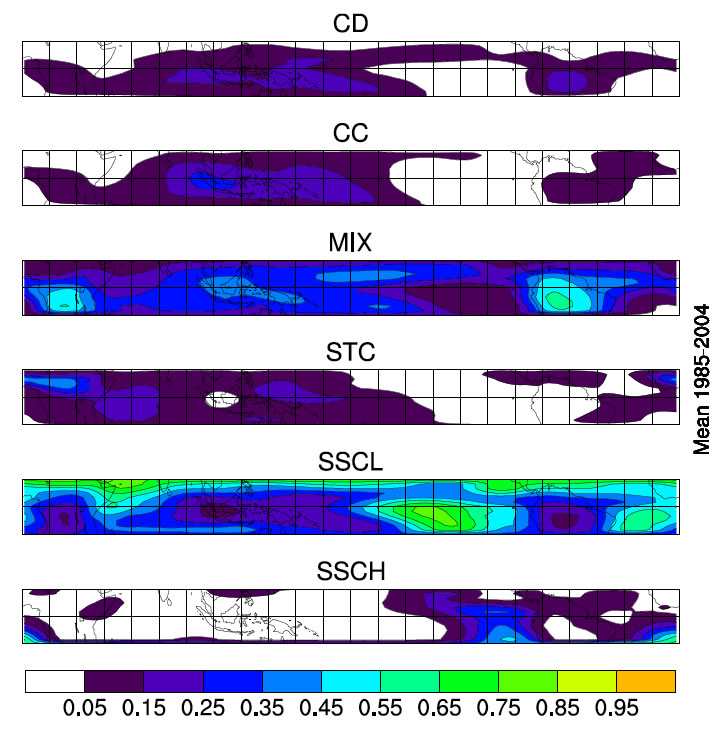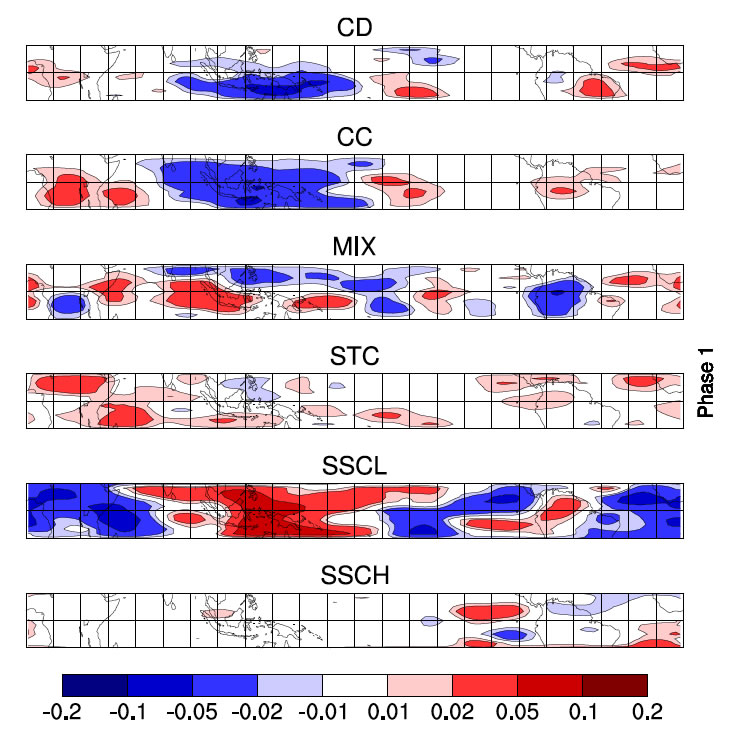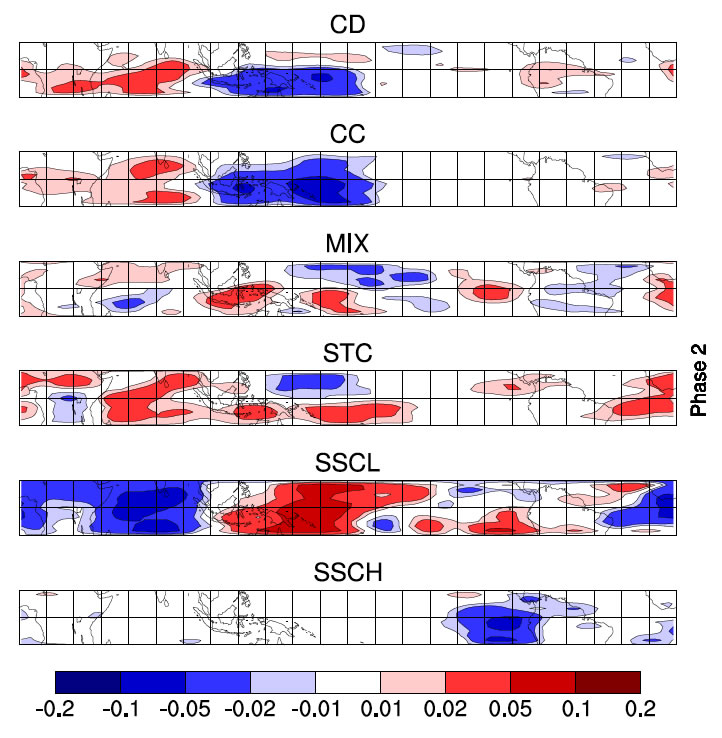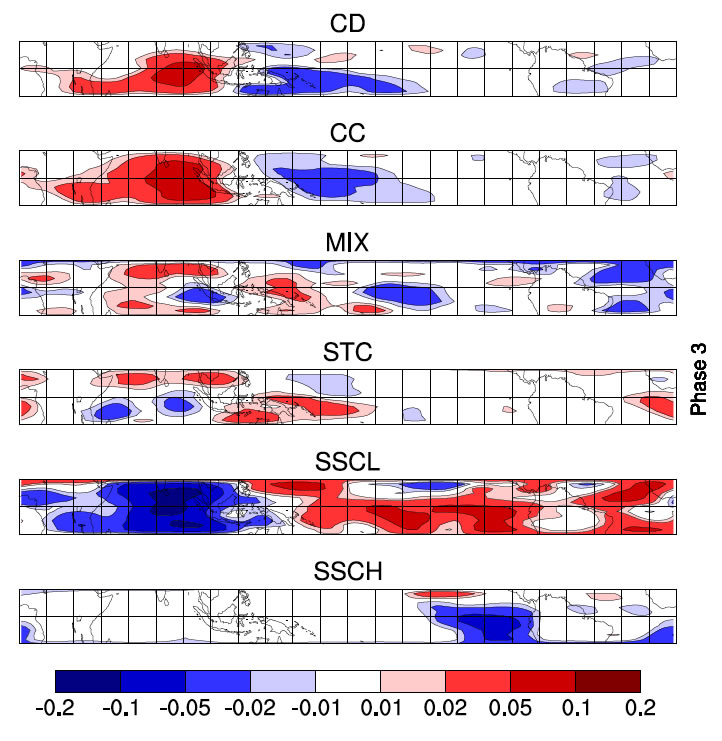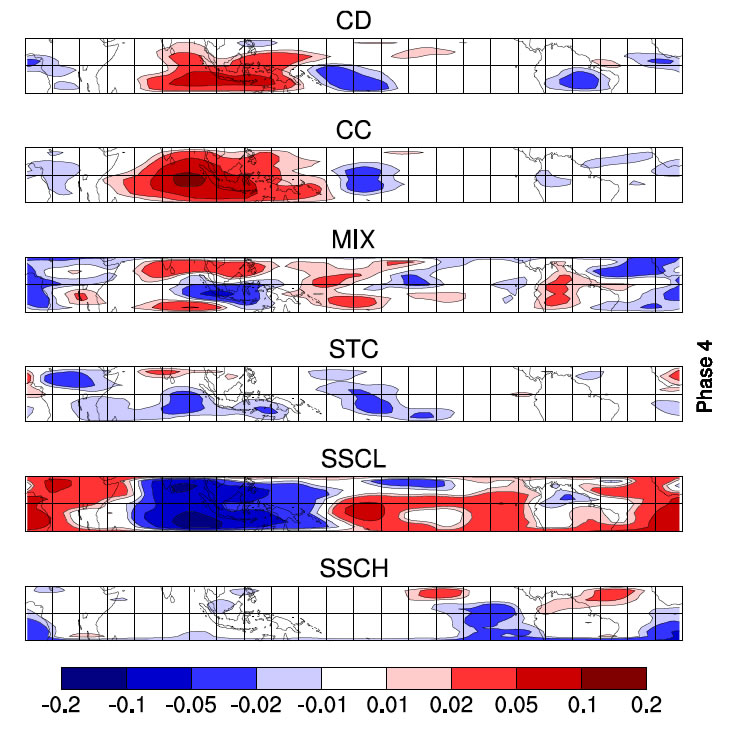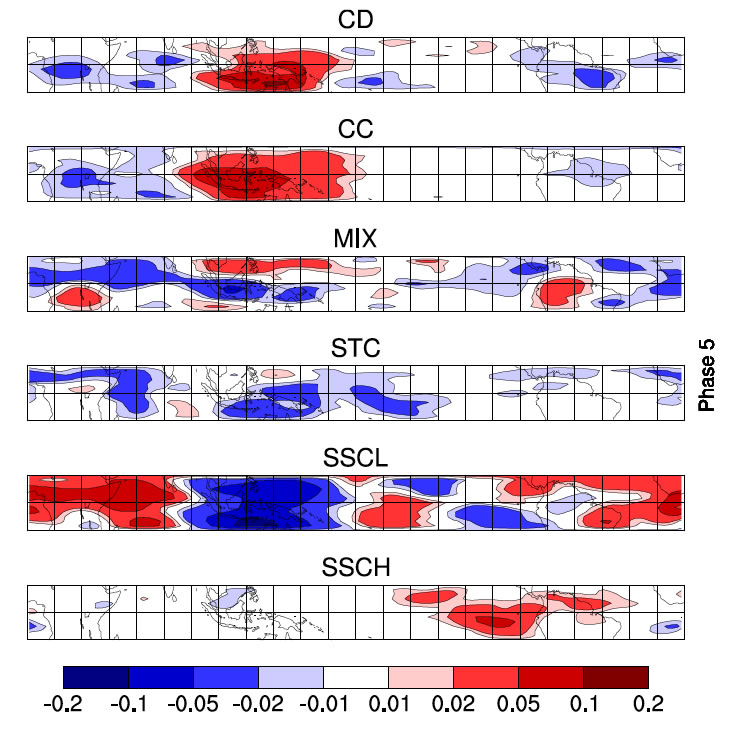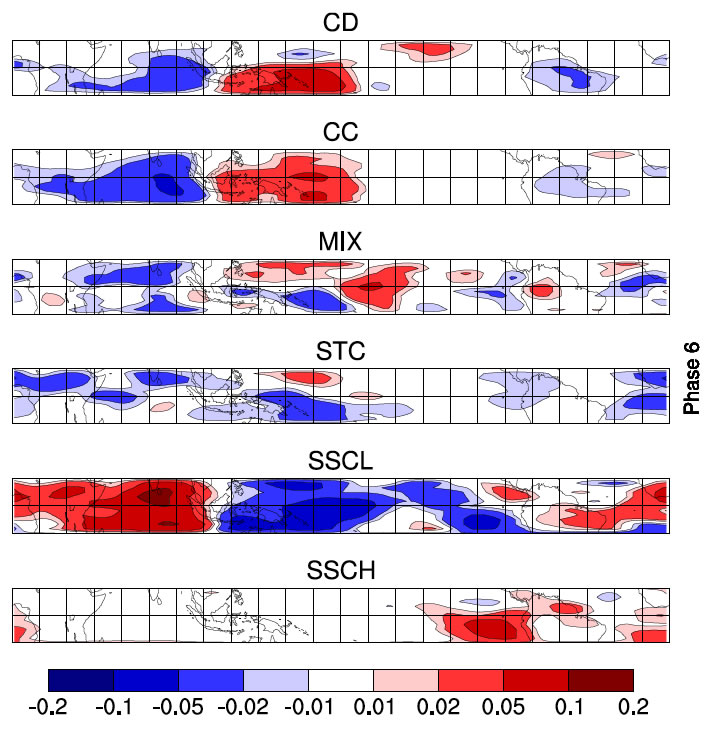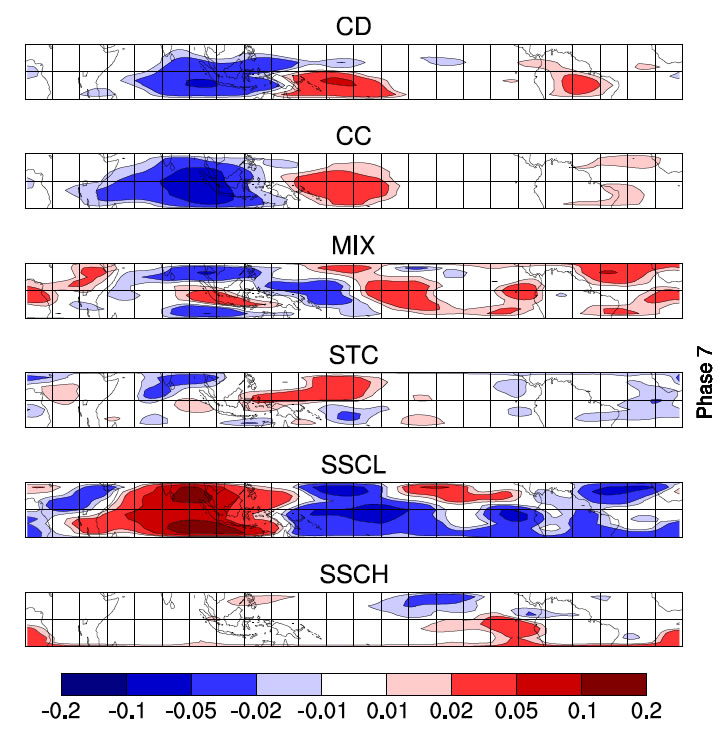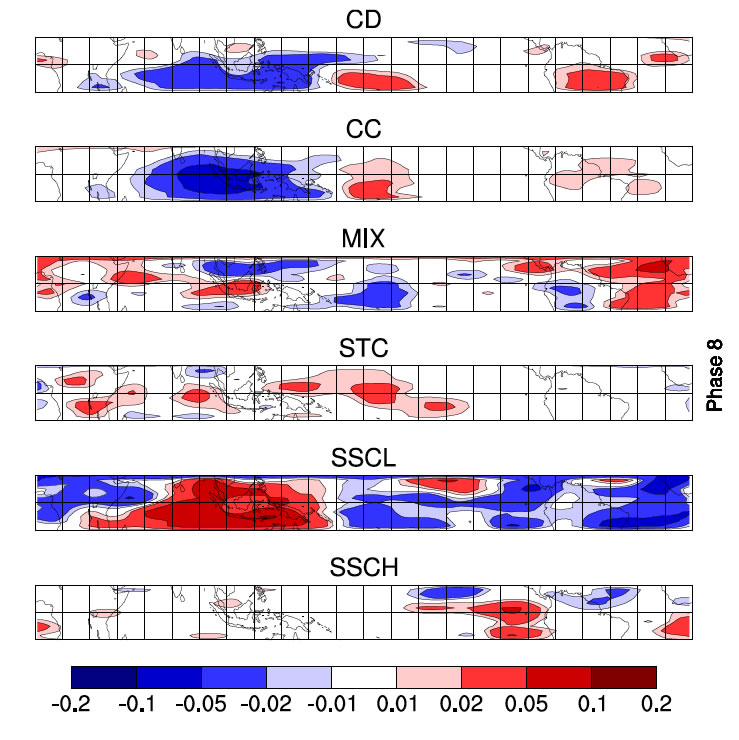| RESEARCH |
| Tropical ISCCP cloud regimes and the MJO |
Wheeler and Hendon (2004) derived an MJO index that measures both the strength and phase of an MJO event. Each discernible event is divided into 8 phases . At the same time, in our research, we have found that the tropical clouds at the scale of an ISCCP grid-box (280 km x 280 km) can be grouped into 6 recurring regimes (Rossow et al., 2005). In a preliminary study we have combined the MJO phase information with the cloud regime occurrence information to investigate the distribution of cloud regime occurrence as a function of MJO phase. We only consider the months of November through April. First we show the mean frequency of occurrence of the cloud regimes for 1985-2004.
The naming convention used here differs from that of Rossow et al. (2005), but the regimes are ordered in the same way from most convectively active (CD) to most suppressed (SSCH). A short description of each regime is provided below. For more details see the associated publications cited on the previous page.
Next we show the anomalies of the frequency of occurrence from the above mean for each cloud regime for each of the 8 MJO phases. For a descrtiption of the meteorology of each of the phases, see Wheeler and Hendon (2004). Phase 1
Phase 2
Phase 3
Phase 4
Phase 5
Phase 6
Phase 7
Phase 8
|
